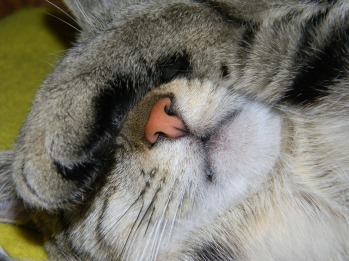
Welcome to this first installment of a new feature here on The Book Wars – “Tales from the Wild – Somewhat True Stories from The Library”. Here I’ll be sharing dispatches from the front lines of children’s literature – the public library, where children and their families interact with literature, sometimes with success, and other times with reviews and reactions of such brutal honesty it would make your head spin.
While the stories recounted in these posts will be based in actual events, the “somewhat true” part of the title reflects the library’s commitment to patron privacy. Names, ages, and/or genders of individuals might be changed to preserve anonymity, while exact wordings might be altered so as to not be recognizable. Still, the interactions themselves will always be based on actual interactions – as anyone who has worked with the public can tell you, you simply can’t make this stuff up.
Thanks so much to the amazing Book Wars teams for welcoming me to their world! Let’s jump in!
“But where’s the real literature?!”
Real literature – a phrase guaranteed the raise the hackles of any librarian, but of particular irritation to a children’s librarian, for whom all literature is most certainly real.

Not impressed.
The speaker was an older individual, who stood facing the shelf of children’s novels. Their brows were knitted, and their expression exasperated.
“Are you looking for anything in particular?” I asked.
“I’m looking for something for my grandchild. They’re always reading these“, the patron said, shaking a paperback copy of Geronimo Stilton with alarming vehemence, as if its very existence was distasteful.” They should be reading something with value. Something like Tom Sawyer or Huckleberry Finn.”
Should be reading.
Something with value.

Sigh….
“Do you know what kinds of things your grandchild likes to read about?” I asked, hoping we could work together towards a compromise, and find something that would meet the grandparent’s exacting standards while still holding some interest for a Geronimo Stilton-obsessed little reader.
The patron looked at me as though I’d asked if the grandchild was an antelope.
“What does that have to do with anything?”
Interactions like this are an all too frequent occurrence in the library. Well-meaning caregivers worry about what their children should be reading, and come to the library searching for books that will make their children smarter, perform better in school, be more refined and ultimately be more successful. Magic books that will somehow make their child all he or she can be.
As any children’s literature aficionado will attest, there are no magic books, and there’s no such thing as “real literature”. Some books might be written with greater skill, or feature more varied vocabulary than others, and some books certainly get better reviews in School Library Journal or in Quill and Quire. In the end, though, none of this matters if those books are of no interest at all to the child who is expected to read them. Forcing any book, no matter how many awards it may have won or how well it is written, upon a child for whom it isn’t the right fit will only result in a bored and frustrated child for whom reading has become a chore, and not a pleasure.
Of course the role of teachers, librarians and children’s literature specialists isn’t to tell caregivers what their children should be reading or in any way comment on how they should be raising them. What we can do is try to support children and their families by providing reading suggestions based on research and on our own knowledge and experience. We can gently support and guide families towards an understanding of reading that sees it not only as a means to achieving personal and professional growth, but also as a source of pleasure, and a life skill that can support children through the many ups and downs of life. We can share our enthusiasm and our love of reading with families with the hope of changing minds and inspiring hearts.

Life is just better with a book.
And as for the discerning grandparent? Together we managed to deduce that the young reader in question enjoyed funny stories about animals, and so I sent them home with the first books in two series about hamsters: “I, Freddy” by Dietlof Reiche, and “The World According to Humphrey” by Betty G. Birney. These titles hadn’t won any awards, but at least they had a better text to illustration ratio than the alternatives, so even this grandparent walked away feeling a little bit better, which in the end is really what it’s all about.
There you have it, the first post in this new series here on the Book Wars. Let me know what you think in the comments below, and see you next time!

So much awesome contained in one post. I would have hissed at the “real literature” phrase as well. So wise, Jane. And well said. Bravo!
Pingback: The Book Wars!·
That tiger-reaction is dead on. Lovely post, Jane.
We’re very excited to have you on board!
Thank you, I’m delighted to be here!
Oh, super excited about this series! Thank you for looking out for little readers!
I worked my way through college working as a clerk in a library, so this sounds all too familiar. So glad you handled it with such skill.
Thank you! I have a long and varied career in customer service which has served me well on so many occasions…*just keep smiling, just keep smiling…..*
Oh, my gosh yes. If only I knew what I know now, back then. We had some weird patrons, as I worked in Los Angeles, and we would get a lot of the mentally ill and homeless people.
Very strange environment.
can’t wait for this !
Pingback: March: Monster Girls Month! | The Book Wars·